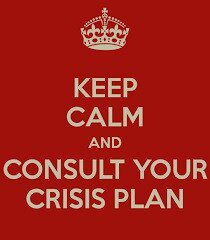
Do You Have a Crisis Management Plan?
How should your association communicate during a crisis?
If you have a plan, that’s awesome, and good for you. Check your progress against these objectives. If you don’t (and you’re not alone) let’s make it happen.
The first step is to identify your objective. Answer the question: “Where do we want to be positioned when this is all over?” This is the starting point for your crisis management plan.
Your plan should cover four groups:
- Your Board
- Your Members
- Your Employees
- Your (other) Key Stakeholders
In all cases, the plan should help to alleviate fears, identify opportunities, and show your leadership in helping each group that is affected to get through the crisis. At the moment of writing this blog, the current crisis is the COVID-19 pandemic and it affects all four of these groups.
It also affects the global economy. Government debt could soar, and when the crisis is over, there could be downward pressure on all government spending. Ensure that your plan covers the early stages of the most likely scenarios in the aftermath of the crisis.
Your crisis management plan should be created by the board with senior management.
- Identify where you want to be positioned with each group at the end of the crisis.
- Create an action plan to accomplish this.
With your action plan in place, focus on how you are communicating with each group.
Your Board
Each director will be experiencing their own stress and for many it will be hard to focus on their leadership role as a director. You want to help them feel supported and well-informed. Keep in mind they’re on the front lines and members will be asking them difficult questions and looking for leadership.
- Be proactive. Give them information before they ask.
- Let them know what the association is doing, seeing and hearing.
- Be prepared for a lack of quorum at board meetings. Consider passing a board resolution for a specific period that in the event of a lack of quorum the board delegates decision making to those directors that are in attendance.
- Be positive and supportive. Give positive reinforcement on an individual basis.
Your Members
- Communicate consistently. Keep it focused and meaningful. Tell them:
- What’s happening?
- What are you doing for them?
- What do you recommend that they do?
- Be positive and supportive.
Your Employees
- Let them know what they can do to avoid a negative outcome for the organisation and how they can contribute to the best possible outcome.
- Be honest. If layoffs are likely, give them an idea of how extensive this might be and when it could happen.
Your (other) Key Stakeholders
- Talk to them. Find out how you can collaborate together to deliver consistent messaging.
- Take the lead.
- Leverage each others’ resources.
- Be positive and supportive.
Summary
It’s only human to want to hide under your desk in the fetal position. Resist the urge. This is our time. Now if ever, is the time to show our leadership.
- Create your crisis management plan.
- Ensure your plan includes your communication strategy.
- Keep putting one foot in front of the other.
Hang in there. Challenge is opportunity.
For more on leadership check out our Leadership Support Program